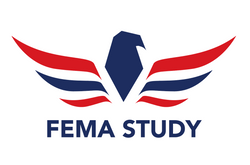IS-1102: Theory of Elevation Rating
This study guide includes all correct answers for IS-1102: Theory of Elevation Rating
Course Overview
This course is to guide insurance professionals, particularly agents, through the steps to properly determine the Lowest Floor Elevation for Post-FIRM Buildings in A or V zones as shown on the FEMA Elevation Certificate. Due to BW-12 legislation and HFIAA-14, elevation certificates play a more crucial role in determining a policyholder’s premium rate.
Course Objectives:
- Determine when an Elevation Certificate is necessary to properly rate a flood insurance policy
- Describe the characteristics of, and differences between an A Zone and a V Zone
- List the steps for accurately identifying the lowest floor in a building for rating purposes using the Elevation Certificate
- Follow the basic steps for elevation rating
- Determine when a building should be considered a “submit for rate”
- Determine the lowest floor for rating for several types of non-elevated buildings using Elevation Certificate Building Diagrams 1 through 4
- Determine the lowest floor for rating for several types of elevated buildings using Elevation Certificate Building Diagrams 5 through 9
- Explain how rating in V Zones is different that rating in A Zones
- Describe the NFIP requirements for proper flood openings and how proper flood openings affect rating
- Describe how insect screening, lattice, or slats affect insurance rates
- Describe how machinery and equipment affect insurance rates
- Describe options for reducing NFIP Flood Insurance premiums
- Locate online resources related to elevation ratings
Primary Audience
Property and casualty insurance agents.
Prerequisites
Recommended Prerequisites
IS-1101, Basic Agent Tutorial and IS-1105, EC made EZ are the recommended prerequisite courses.
CEUs:
0.2
For more information regarding this course please visit https://training.fema.gov/is/courseoverview.aspx?code=IS-1102


